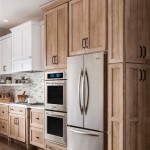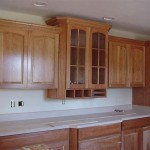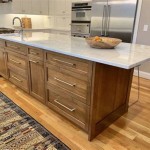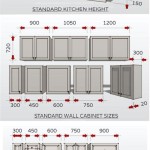How To Measure Kitchen Cabinets For Replacement
Replacing kitchen cabinets is a significant undertaking that requires careful planning and accurate measurements. Precise measurements ensure new cabinets fit seamlessly, enhancing the function and aesthetics of your kitchen. This article will guide you through the process of measuring your existing cabinets for replacement, providing you with the necessary information to make informed decisions.
1. Gather Necessary Tools and Supplies
Before you begin measuring, assemble the following tools and supplies:
- Measuring tape (at least 25 feet long)
- Level
- Pencil or pen
- Notebook or notepad
- Camera (optional, for documenting measurements and cabinet details)
Ensuring you have these items readily available will streamline your measurement process.
2. Determine Cabinet Types and Configurations
Before taking measurements, understand the types and configurations of your cabinets. This involves identifying the following:
- Cabinet Styles: Determine if you have base, wall, upper, or lower cabinets, along with any specialty cabinets like pantries, islands, or corner units.
- Door Styles: Note the door styles, whether they are raised panel, flat panel, or shaker. This information will help you match the new cabinets to your existing style.
- Cabinet Construction: Observe whether the cabinets are frameless or framed. Framed cabinets have a visible frame around the door opening, while frameless cabinets have doors that sit directly on the cabinet box.
- Cabinet Layout: Sketch out the cabinet layout on your kitchen, including the placement of all cabinets, appliances, and countertops.
This in-depth understanding of your existing cabinets will be crucial in selecting suitable replacements.
3. Measure Cabinet Heights and Depths
Start by measuring the heights and depths of your cabinets. Here's how:
- Height Measurements: Measure from the top of the countertop to the bottom of the cabinet for base cabinets. For wall cabinets, measure from the top of the countertop to the top of the cabinet. Always measure from the same point on both sides of the cabinet to ensure accuracy.
- Depth Measurements: Measure the depth of the cabinet from the front edge to the back. For base cabinets, include the countertop overhang in your measurement. For wall cabinets, measure the depth of the cabinet box itself, excluding any overlays or trim.
- Check for Variations: Carefully inspect the cabinet for any inconsistencies in height or depth. Record any discrepancies in your notebook.
Accurate measurements are vital for a seamless installation of your new cabinets.
4. Measure Cabinet Widths and Distances Between Cabinets
Next, focus on measuring the widths of your cabinets and the distances between them.
- Cabinet Widths: Measure the width of each cabinet from the outer edge of the door to the outer edge of the opposite door.
- Distances Between Cabinets: Measure the distance between the cabinets, including any gaps or spaces.
- Wall Dimensions: Measure the width of the wall sections where the cabinets are installed.
- Special Considerations: For corner cabinets, measure the diagonal distance from one corner to the opposite corner of the cabinet’s base.
These measurements ensure that your new cabinets fit correctly and that you have adequate space for appliances and countertops.
5. Measure the Countertop overhang
Measure the overhang of any existing countertop. This is the distance that the countertop extends beyond the front of the cabinet. The overhang is typically 1.5 inches for base cabinets, but it can vary depending on your specific kitchen setup.
This measurement is crucial for ensuring that the countertop is appropriately sized for your new cabinets and that the overhang is adequate for comfort and functionality.
6. Document All Measurements and Cabinet Details
As you measure, carefully record all measurements in your notebook. Include the following information for each cabinet:
- Cabinet type (base, wall, etc.)
- Cabinet location (left, right, center)
- Dimensions (height, depth, width)
- Any unusual features or inconsistencies
- Photo documentation (optional, for visual reference)
Thorough documentation will help you communicate your measurements to cabinet manufacturers or installers, ensuring a smooth and efficient replacement process.
7. Double-Check All Measurements
After you have completed all measurements, take the time to double-check them for accuracy. This step is crucial as any errors in your measurements can result in cabinets that do not fit correctly. Re-measure each cabinet and distance to ensure that your data is accurate.
Double-checking ensures a smooth and successful cabinet replacement process.
Armed with precise measurements and detailed documentation, you can confidently approach the process of replacing your kitchen cabinets. By following these steps, you can ensure a successful outcome and enjoy the transformation of your kitchen.

Measure Your Kitchen Cabinets Before Designing The Layout

How To Measure Az Cabinet Company

Get Perfect Kitchen Cabinet Measurements With These 5 Easy Steps

Measure Your Kitchen Cabinets Before Designing The Layout

How To Measure For Cabinet Doors And Drawer Fronts

How To Measure For Cabinet Doors And Drawer Fronts

How To Measure Kitchen Cabinets 11 Steps With Pictures

How To Measure Cabinet Doors Before You Order Now

Measure Your Kitchen Cabinets Before Designing The Layout

How To Measure Kitchen Cabinets 11 Steps With Pictures
Related Posts








